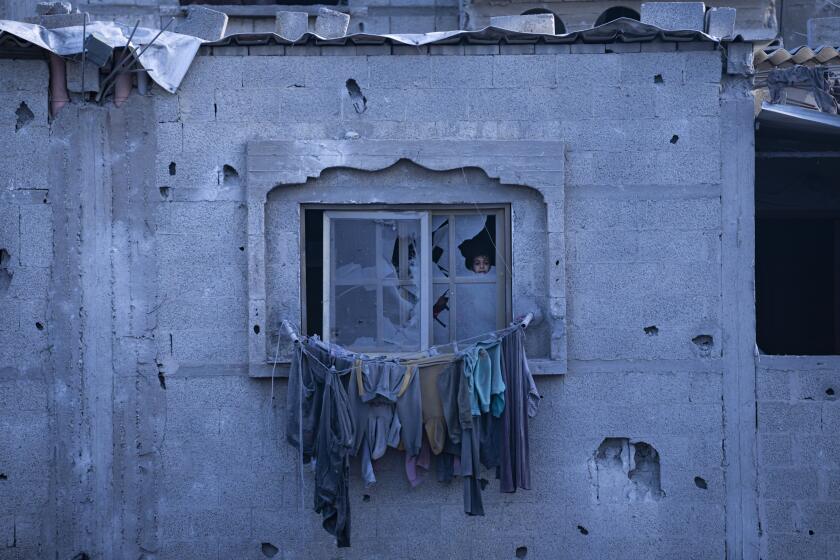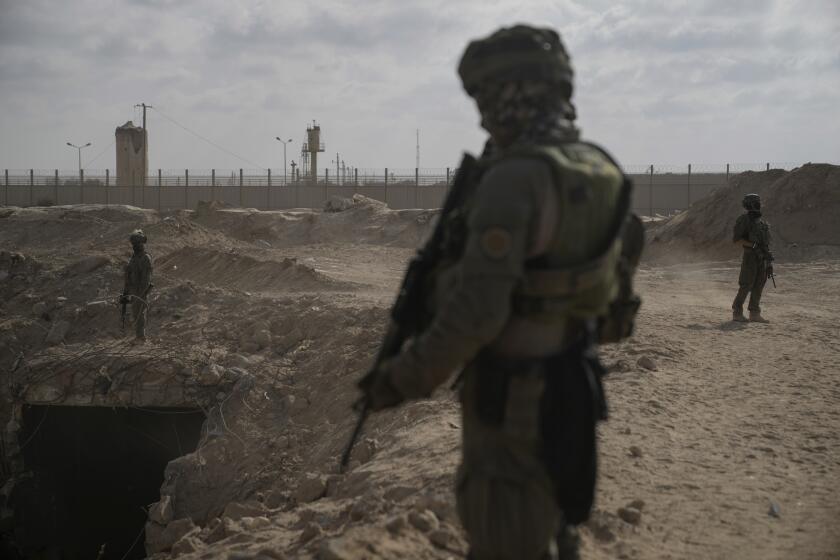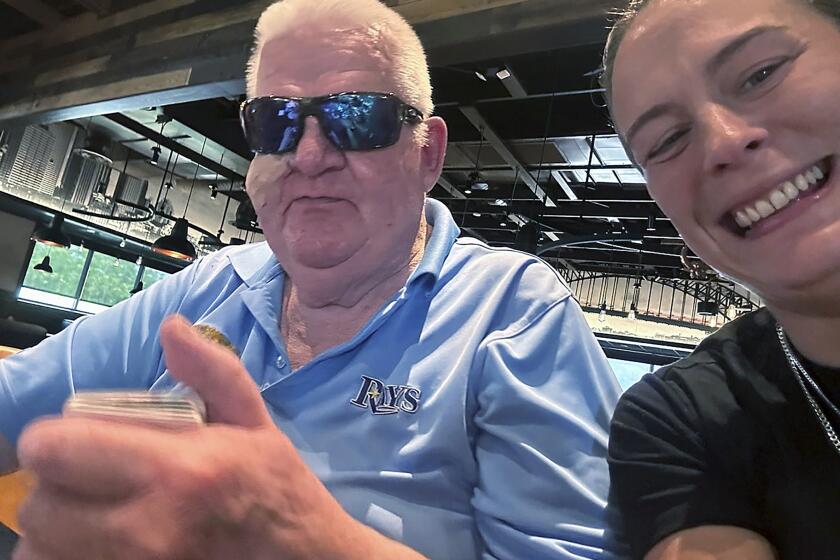Unit Prepares Fallen Troops for the Journey Home
It is, one Marine said, like watching a brother die every day.
As the U.S. military death toll mounts in Iraq, the trauma on the overall force is softened by the fact that the fallen troops come from different battalions and different companies. In a force of 30,000 Marines, for example, only a few will be able to say they knew someone who died.
But for the 20 members of the Marine mortuary affairs unit in this former Iraqi air base west of Baghdad, each person lost to combat or accident becomes a personal memory as they gather the body parts at the scene, sift through possessions and prepare the often mangled body for shipment back to the United States.
Speed is of the essence. The Marine Corps wants the body on a flight to Dover Air Force Base in Maryland before the family gets the fateful knock on the door by casualty assistance officers.
The unit, stationed at a base run by the 1st Force Service Support Group from Camp Pendleton, mobilizes within 20 minutes of notification to speed to the scene of a military death anywhere in the Al Anbar province, the heart of the so-called Sunni Triangle.
“We want to get that kid off the ground as soon as possible,” said Chief Warrant Officer James Patterson, who runs the mortuary unit. The Marine Corps runs a second mortuary unit at a base 100 miles north of here, and the Army has one in Baghdad.
In two months, the Taqaddum unit has sent 56 dead Americans home to their relatives. Six dead Iraqis also have been identified and turned over to their families.
The emotional wear and tear is considerable. Some members have asked to be transferred out of the unit; some have been ordered back to the United States by Navy doctors.
Getting to the scenes can also be dangerous. At least twice, members of the unit have had to fight their way past insurgents to recover bodies.
Training for the unit included duty at morgues in Baltimore and Washington. Members say it was worthwhile, but it did not prepare them for the trauma of seeing dead comrades so frequently.
“It’s different when it’s someone who looks like you, is your age and rank and is wearing the same uniform,” said Lance Cpl. Garth Troeschen, 23, of Brandywine, Md.
“It reminds you of your own mortality and that you’re in a combat zone,” said Cpl. Daniel Cotnoir, 31, of Lawrence, Mass. “You look down, and it’s a Marine who traveled the same road as you but wasn’t as lucky.”
At the scene of the death -- be it from a firefight, vehicle accident or detonation of an improvised explosive device -- mortuary affairs members hunt for even the smallest body part. One reason is to assist in identification; a basic goal of the unit is that no Marine be listed as missing in action because a positive identification cannot be made.
There is also another reason, a grisly one.
“I’m not interested in seeing a body part being waved as a war trophy on television,” said Patterson, 36, of Temecula.
Possessions also are gathered at the scene and where the Marine was housed. Blood-splattered pictures and other belongings are washed before being sent home.
Patterson checks to see whether the Marine -- or soldier or sailor -- had anything in his possession that would increase the pain of family members. He is empowered to ensure that such things do not reach the grieving family, even though he has yet to exercise that authority.
Letters on the bodies are often wrenching. Some are from loved ones: “I hope you are well when this reaches you.”
Sometimes there are unfinished letters to parents and others, such as, “Don’t worry about me. I’m going to be OK.”
Lance Cpl. Christian Slater, 21, of New Orleans was gathering a dead Marine’s possessions when he found an ultrasound picture of his unborn baby.
“I looked at it for a brief second and put it away quickly,” Slater said. “I couldn’t look at it again. It was already burned into my brain.”
To relieve stress, the mortuary affairs workers pump iron and listen to music. In the beginning, they did their work in silence in their converted airplane hangar, but later they found that music helped. “Fire and Rain” by James Taylor is a favorite.
Some of the mortuary workers have civilian experience in the trade. For example, Cotnoir, a reservist, is a licensed mortician who runs his family-owned funeral home.
Most, however, are trained in other specialties but have volunteered for the unit. Patterson, for example, is a specialist in nuclear, biological and chemical warfare.
Patterson and the others were attracted by the motto of the unit: “No One Left Behind.” His team put the motto on the roof, making it one of the more visible landmarks on this sprawling base.
But even many combat-toughened Marines prefer not to think about what the mortuary Marines do. “They don’t want to know the details,” said Sgt. Mark Sohm, 31, of Frederick, Md.
The details of the job are laid out in no uncertain terms in a manual. For example, pictures are never taken of the bodies. And those taken at the scene of death should avoid showing the body.
Nomenclature has changed. In the beginning of the current Marine deployment that began in late March, members of the unit referred to HR (human remains) and KIAs (Killed in Action) as they examined bodies in five work areas and made detailed drawings of the wounds.
“Somebody, I don’t know who, said let’s call them ‘angels,’ and it just fit,” Patterson said. “That’s what we’re comfortable with: They’re our angels, going home.”
More to Read
Sign up for Essential California
The most important California stories and recommendations in your inbox every morning.
You may occasionally receive promotional content from the Los Angeles Times.










